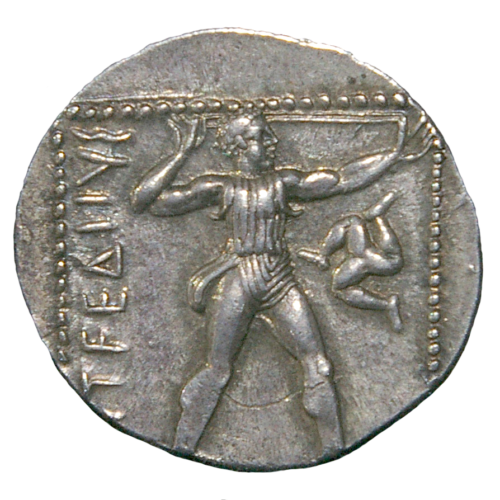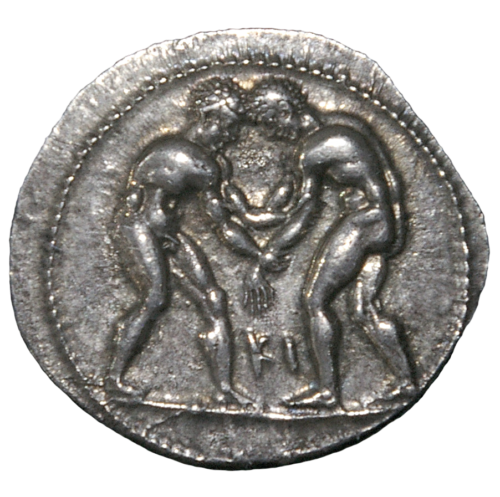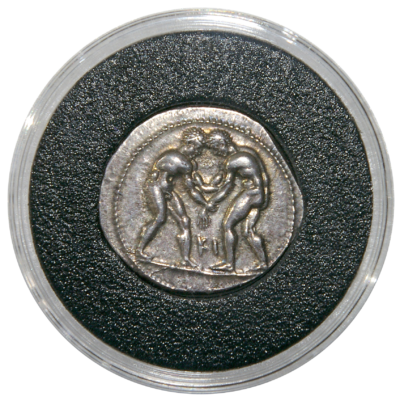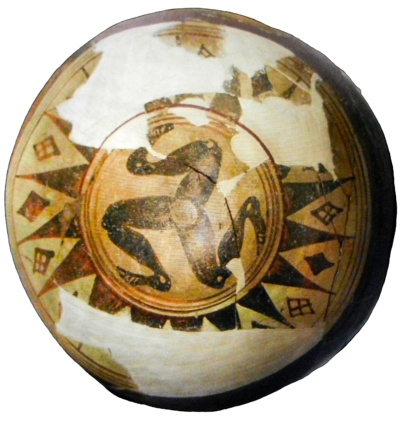A014
Silver, Sear 5396 (£200 in 1978); B.M.C. 19.98, 44
22 mm (0.8”), 10.8 grams
HISTORY: The history of this coin begins more than a hundred years earlier to its minting. For several centuries, the region of Pamphylia was in the crossfire of warring nations. The Greeks, then the Persians, then the Greeks once again ruled over the people and landscape. After successfully advancing on Persian strongholds, Alexander the Great (Alexander III of Macedon) once again established control over Pamphylia in 330 BC. Aspendus (or Aspendos), a prosperous city in ancient Pamphylia, was among the earliest cities to mint coins. Starting around 500 BC, they began producing “staters,” silver coins of various sizes and weights. Aspendus was famously known for its military training and prowess, symbolized by “Slinger,” a popular theme exemplified on the obverse of this coin.
Pamphylia was known by locals as Estwedus, kind of like New York City is referred to as “The Big Apple.” On earlier coins, the name was abbreviated as “ES” or “ESTFE.” Later coins included the full name “ESTFEDIIYS.”
OBVERSE: Slinger is shown advancing with triskeles in front (three-legged symbol, see Detail 1) and an almost complete spelling (TFEDIIYS) of “ESTFEDIIYS” (Estwedus, the local name of the city) to the left. The beaded border is clearly defined on three sides, but Slinger’s legs are cut off at the ankles along with a totally absent lower beaded frame. Since the minters were never going to be able to fit such a design on this size planchet, why didn’t they just recast their dies with a smaller image?
REVERSE: Estwedus, famous for its soldiery, casts this scene depicting two warriors wrestling. The letters “KI” (Kappa Iota) are between the wrestler’s legs. This mint strike is almost perfectly centered with the wrestler’s entire bodies within the beaded, circular border.




